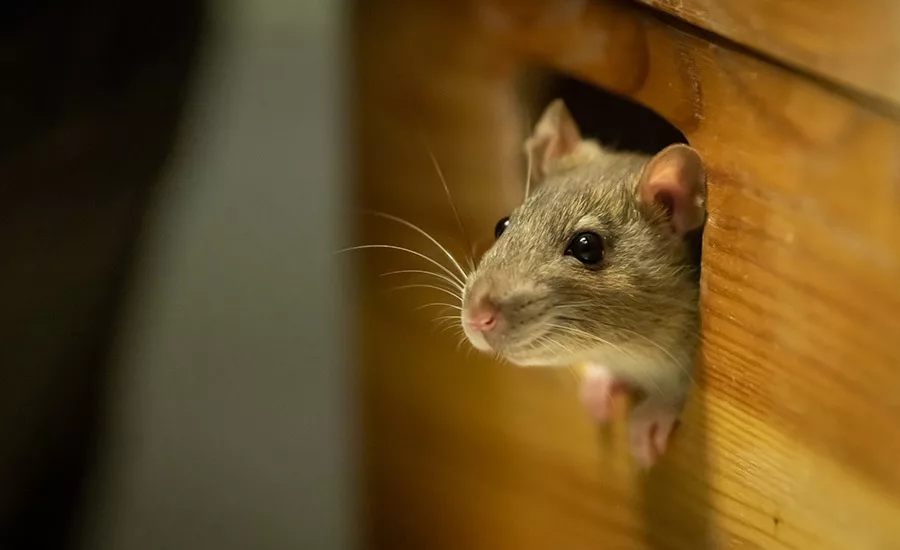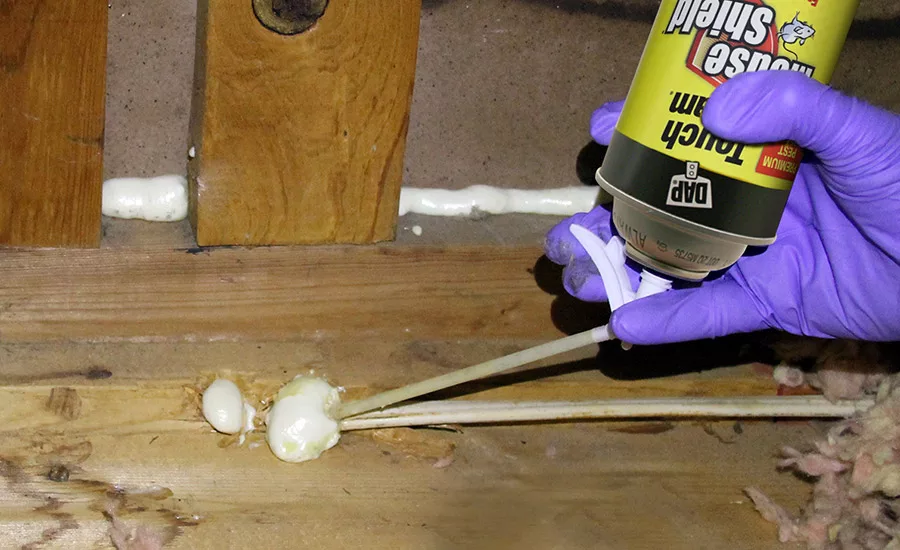Using Foam Sealants for Pest Prevention
Pest & Rodent Awareness Week is coming up. How can expanding polyurethane foams help seal building envelopes against unwanted visitors?



Rodents like mice and other pests such as spiders, ants, roaches, birds, and bats typically search for a warm place to spend the cold winter months—sometimes inside a home or business. Mice and other critters enter homes and buildings through cracks and holes found in walls, floors, and foundations. Small rodents may also enter through gaps in windows or ceilings, as well as through sewer lines. According to the National Pest Management Association, 37% of homeowners have seen a rodent in their home in the past year.
Mice are well-equipped to get into homes and buildings. Due to their body shape, mice are capable of fitting through holes as small as a dime. If drainage pipes are not properly sealed, mice may enter homes through sink or bathtub drains. They are also known to find their way inside via entry holes around plumbing and oven gas lines. Mice also can jump a foot into the air and are excellent climbers and swimmers.
After a colony enters a structure and finds it to be safe and warm, mice rarely venture outside again. And because they proliferate quickly, their populations can soar within a matter of months. Building occupants commonly do not recognize mouse holes until other signs of infestation appear.
Not only can mice contaminate food and surfaces with salmonella and other bacteria, but these critters and their droppings are vectors for the hantavirus that can be passed on to humans. Mice also can bring fleas, ticks, and other parasites into homes and businesses. As we mark Pest & Rodent Awareness Week in October, it’s important to take a proactive approach to deter these critters before they find a way into a building.
Selecting Foam Products to Block Pests
Whether you are a professional remodeler or a seasoned DIYer, expanding foam products are available to help block pests from entering a home or business. In fact, expanding foam products have been developed that bond to most common building materials while also including an olfactory deterrent to help prevent pest incursion.
One such foam is specially formulated to block mice, birds, bats, tree squirrels, and other pests such as ants, roaches, and spiders.* It can be used to fill gaps and cracks inside garages, attics, crawl spaces, basements, under sinks, around pipe/electrical penetrations, and any areas where pests, insects, and drafts can enter the structure.
Another foam is a multi-project, all-season, reusable insulating spray foam that offers complete barrier protection.** It can be used for small and large gap filling, window and door sealing, pest entry points, and even fire-blocking penetrations.
*DAP Barrier Multi-Project Foam **DAP Mouse Shield Foam Sealant
Areas to Seal
It is important to pay attention to several areas when it comes to sealing a structure. Cracks, openings, and holes in a building envelope are all potential pest entry points, especially basements, garages, and attics. The most common areas of intrusion include:
Posts and J-Channels
Corner posts are used to finish off the ends of siding at the corners of houses, and j-channels are used like trim around windows and doors to hide the ends of vinyl siding. The hollow corner posts make it easy for mice to climb up the side of a building, and the gaps between j-channels and siding are often large enough for mice to get in behind the siding.
Foundations
Mice can get into a structure through cracks in the foundation. Rubble foundations and stacked stone foundations are particularly susceptible to gaps that are large enough for rodents to get through.
Openings for Electrical Cables and Pipes
Utility companies make openings in the side of buildings to run various wires and pipes. These holes are often large enough for rodents to get inside.
Under Sinks in Kitchens and Bathrooms
If mice have entered a building, they are likely to travel “behind the scenes” to try to enter areas where they may be able to find food and water.
Effective Foam Application
A few steps should be taken in order to use the foam correctly. To properly seal a hole, fill the void approximately one-third full of foam to allow for it to expand. For extra protection, experts recommend packing holes with steel wool and then applying the foam to the gap or opening.
Pros and DIYers who use the right foams in the proper manner will block mice and pests from entering buildings while providing a long-lasting airtight and water-resistant seal. This effective barrier will not only deter many kinds of pests from entering a structure, including mice, ants, spiders, crickets, and other insects, but it also can lead to energy-efficiency savings by better sealing the structure and building envelope.
For more information, visit www.dap.com.
Listen to our podcast with Kevin Corcoran!
Looking for a reprint of this article?
From high-res PDFs to custom plaques, order your copy today!






